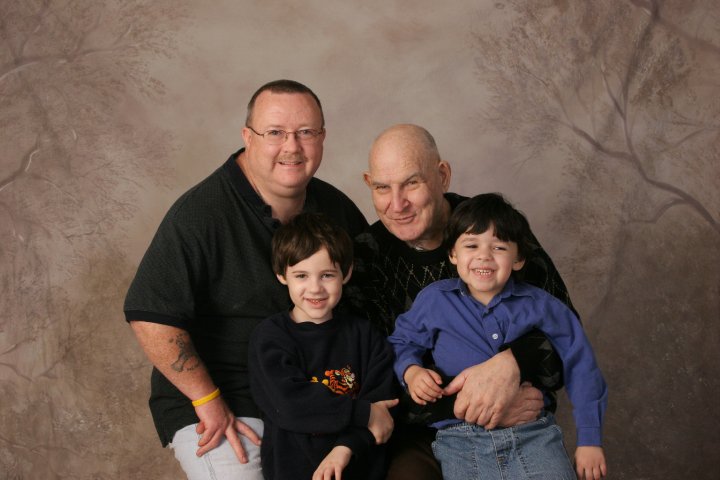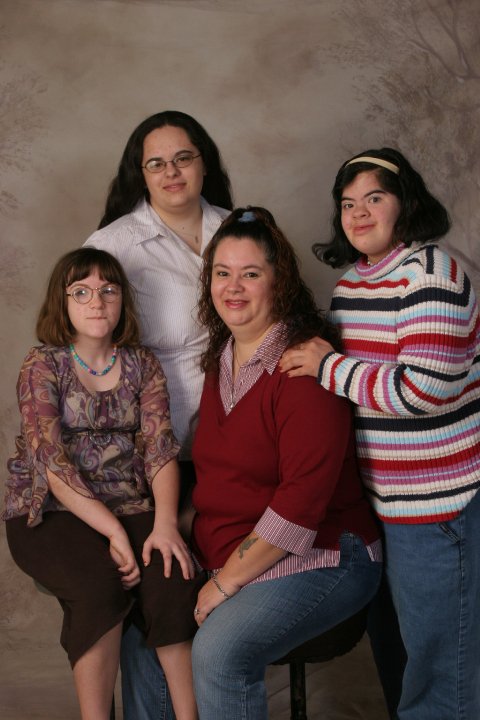I am participating in the 2012 Wordcount Blogathon, which means one post every day for the month of May.
Today is Guest Post Exchange Day! I am honoured to introduce you to a fellow special needs mom, who is not only an awesome blogger, but also an awesome friend. Mimi has not one, not two, but five children with special needs. That would sound daunting to anyone, but Mimi wouldn’t change her life for anything.
Hi! I’m Mimi, mom to 5 great kids, all with special needs, but we don’t focus on that. We focus on their achievements, their triumphs and the love that they have for each other. Sure, they fight just like any other siblings would fight but at the end of the day the love is still there for each other. My oldest daughter is 24 and diagnosed with PDD-NOS (a form of autism) and is an unmedicated bipolar by her choice. My next daughter is 22 and was born with Down Syndrome, hydrocephalus, PDD-NOS and acanthosis nigricans, she’s my spit-fire child. Next is my soon to be 16 year old daughter who was born with spastic diaparesis cerebral palsy, she also has Asperger’s Syndrome, bipolar with psychosis, anxiety disorder and an eating disorder. Next are my two boys, my first son is 10 (11 in June) and for some unknown reason he is cognitively impaired, he too has PDD-NOS and a mood disorder. My youngest son is 9 (10 in June) and he was born with Fetal Valproate Syndrome, static encephalopathy (due to a traumatic birth), he has PDD-NOS and a mood disorder.
Raising special needs children has its ups and downs, but I wouldn’t trade my life for anything the world has to offer me. My children are the reason my world rotates on its axis. Some people call me a mother polar bear because I am so protective of my children, but who else is going to protect them besides me?
My boys are the best of friends, they are great playmates for each other and I hope and pray that the bond between them stays forever. It’s similar to the bond between my 2 oldest daughters. They are close because when they were young girls, I was a single parent by my choice, so it was just us 3 girls against the world. Until I met my husband in 1994, Bethany was 6 and Lauryn was 4 and Jon has been their daddy ever since.
What entertains my kids? Different things… My boys are video gamers with their dad, they each have either their PSP’s or PSP Go’s or in Jons case his PSP Vita, but they all three will gang up on the bed and be gaming, ignoring everything else that’s going on, whereas Maurra my (almost) 16 yr old loves doing research on various things, which is very common for children diagnosed with Asperger’s Syndrome, right now she’s focusing on historical events. Lauryn is crazy for Justin Bieber and loves to watch horror shows in her bedroom. Bethany is my crazy football fan – well I’m pretty crazy for our Green Bay Packers also, so we tend to watch football together and we DVR the games so we can watch them through the week.
Our social outings look a little different than most. First of all, my 3 youngest kids can’t handle car rides very well, so our trips have to be short in nature, and there has to be a reward at the end of the trip. Lauryn enjoys going to her adult day program 4 days a week, but that’s about the extent of her traveling comfort. She loves to dance in the truck which is fun and the cars around us seem to be her audience. Bethany (my oldest) and I tend to do mother-daughter outings or she will go with me if I have to run errands. It’s hard to break things up so the kids can handle everything, but in the end it’s for the best for them.
The boys are getting ready to start their 3rd year playing Miracle League baseball, which is baseball strictly for children who are disabled. I volunteer my time with the league as the team coordinator and absolutely love watching all of the kids play the game.
Like I said before, I love having special needs children, and now we are looking into adopting a special needs child because there is more room in my heart for more children, but I can’t have them myself anymore. So we are looking into a special needs adoption. I hope it all works out for the best.
Well, thank you for letting me share my family with you. Have a great day!
And thank you, Mimi, for sharing your family with us!
Mimi has a great blog at Wife… Mom… Writer… All Blessings. She can also be found on Twitter @Gigi_S.











